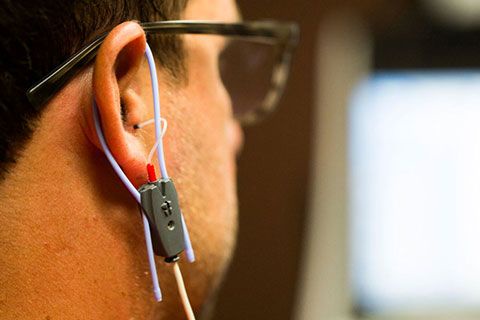Hearing aids have been around for a while, but they haven’t always been quite as advanced as they are today. There were likely some forms of hearing aid technology used by ancient civilizations, but one of the first hearing aids that we have on record is the ear trumpet.
About the First Hearing Device
The ear trumpet was introduced in the 17th century and is considered as the first device used to help the hearing impaired. The earliest version of these ear trumpets were actually made from hollowed-out buffalo horns.
The small end of the horn would be placed inside the ear canal, and the larger end would collect sound and increase the volume for the user. It was much more effective if the person talking to the one using it talked directly into the open end, eventually metal trumpets were made in various shapes and sizes, and used for a larger part of the late 1800s , and early 1900s.These provided a small amount of benefits , but in the absence of electricity, individuals with hearing loss didn’t really have any other options. Also used in the late 1800s were conversation tubes, autophones and dentophones.
Conversation tubes were pretty similar to ear trumpets, but more like stethoscopes, where you had a rubber tube that sound passed through after being picked up by a cone. There are even some versions of conversation tubes that are being made today, and retail for around $40.
Working of First Hearing aids
Autophones and dentophones are pretty interesting because they are likely the first phone conduction hearing aids that collected the vibration of sound from a flexed fan that the user held in their mouth, and sent that vibration through their upper teeth into their inner ear. The user had to hold this device,and it obstructed their mouth so they couldn’t speak at the same time, but nonetheless,it's a pretty clever invention.
Evaluation of Hearing Aids
In the early 1900s, carbon hearing aids were invented.Due to the invention of carbon microphones that were used in telephones. These carbon hearing aids were small enough to wear on the body, but were limited in their ability to amplify sound enough for an individual with a significant hearing loss to perceive benefit.
In 1921, we saw the invention of the vacuum tube. This led to the development of vacuum tube hearing aids, which allowed for amplification levels up to 70 decibels. While this was a substantial improvement in the amount of amplification they were largely considered table top hearing aids, because they were so large you couldn’t really carry them around with you.
27 years later, in 1948, the transistor was invented. The transistor eventually replaced vacuum tubes, but for a while, they were used in tandem, and they allowed for smaller hearing devices, it could still produce a significant amount of amplification. There were issues when it came to durability, since transistors were susceptible to moisture, but you ca\ould, once again, be mobile with your hearing devices.The body worn transistor hearing aid was common enough that you may have grandparents or great grandparents that actually used to use them.
It then only took seven more years for the development of the 100% transistor hearing aid. This led to the development of the first behind the ear hearing aid, the Sonotone, model 79 in 1995, which doesn't really seem like it was that long ago. Unfortunately since that time, the hearing aid manufacturer Sonotone has gone out of business.
In the mid 1950s, eyeglass hearing aids were also pretty popular. This style of hearing aid had the hearing aid components built into the frames of the glasses. They used tubes with ear molds to take the amplified sound from the glass frames into the ear canal of the wearer. They were probably a little more inconspicuous than body worn hearing aids at the time, but they’re no longer in existence in today’s hearing aid market.
Cochlear implant
Now, in some cases, hearing aids cannot effectively treat all forms of hearing loss. This is what led to the development of the cochlear implant in 1957. The first implant was a single channel implant, which didn’t allow the user to differentiate between low, mid, and high frequency sounds. Eventually, a multichannel implant was developed and brought to market in the mid 1970s.
While technology did continue to progress over the following years with analog and digital technology. It took until 1996 before we saw the first commercially available 100% digital hearing aid, the Widex Senso. This was shortly followed by a hearing aid from Oticon, but it seemed to spark an arms race in the rapid development of hearing aid technology.
As we know, there is a great evolution in hearing aids and nowadays hearing aids in Singapore are the latest and most advanced hearing aids with great variety by the The Hearing Centre, an audioloigst and hearing aid store in Singapore.


No comments yet